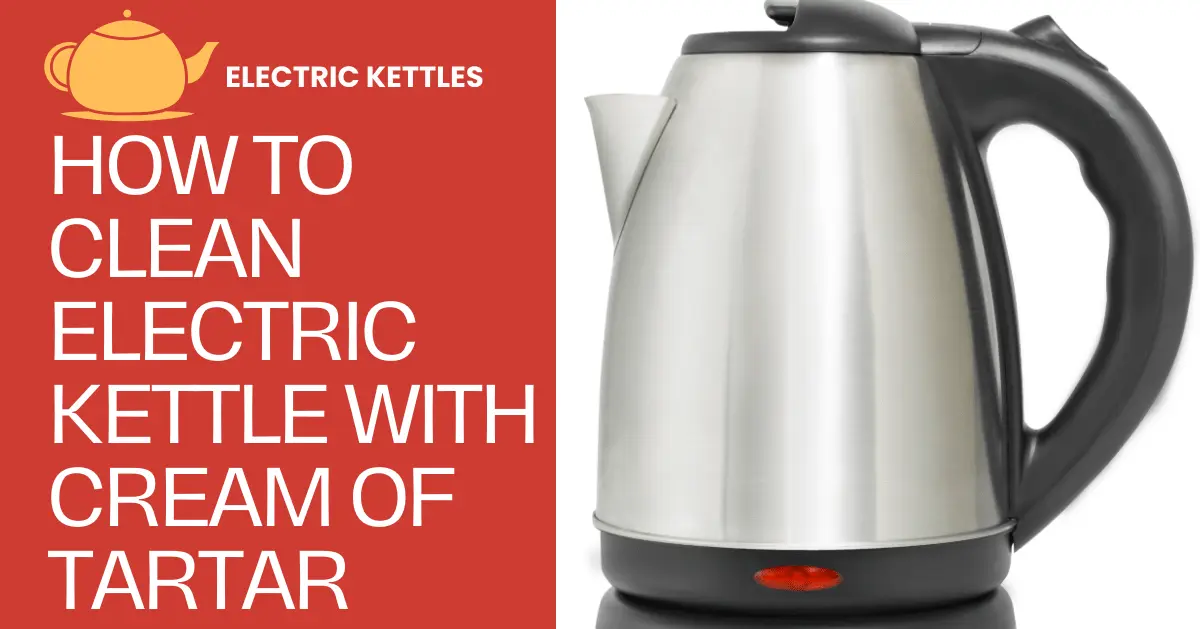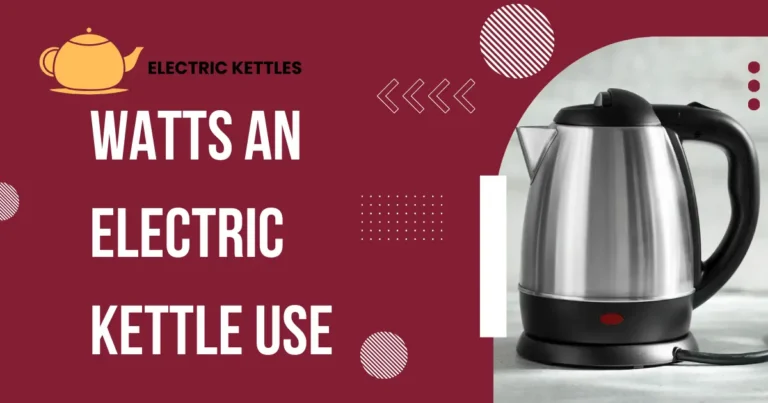How to Clean Electric Kettle With Cream of Tartar
Cream of tartar is a natural and gentle cleaning agent. It’s often used in baking, but it’s also great for removing stains and limescale in electric kettles. This powder has a mild abrasive quality, which makes it safe for most surfaces. Using cream of tartar for cleaning is an eco-friendly choice since it’s a natural ingredient without harsh chemicals.
Cleaning your electric kettle regularly keeps it working well and helps prevent buildup. Over time, minerals from water can leave deposits that reduce heating efficiency. This can lead to slower boiling times and may affect the taste of your water. By cleaning regularly, you can make your kettle last longer and avoid energy waste.
Table of Contents
Materials Needed for Cleaning
- Cream of Tartar: This is the key ingredient for cleaning. Cream of tartar is mildly acidic, which helps break down limescale and mineral deposits inside the kettle. It’s safe to use on metal surfaces and effective without being harsh or abrasive.
- Water: Water is used to mix with the cream of tartar to create a cleaning solution. The water will help dissolve and spread the cream of tartar inside the kettle, making it easier to cover all areas affected by limescale.
- Soft Sponge or Cloth: A non-abrasive sponge or soft cloth is essential for gently scrubbing the kettle. This avoids scratching the interior surface, keeping it smooth and clean after removing the buildup.
- Measuring Spoon: Using a measuring spoon ensures you add the right amount of cream of tartar for an effective cleaning solution. Generally, about a tablespoon works well for a full kettle.
- Bowl or Small Container: A container is helpful for pre-mixing the cream of tartar solution if you prefer applying it to specific areas. This step allows you to control the thickness of the paste.
- Towel: A clean, dry towel is useful for thoroughly drying the kettle after rinsing to prevent water spots. This also helps ensure no moisture is left inside before storing.
Step-by-Step Cleaning Process
Prepare the Kettle
Start by unplugging the electric kettle to ensure safety while cleaning. Empty any water left inside, as this will make the cleaning process easier. Rinse the kettle briefly with warm water to remove any loose debris or residue from previous use. This prepares the kettle’s interior for the cream of tartar solution.
Mix the Cream of Tartar Solution
Measure one tablespoon of cream of tartar and add it directly to the kettle. Fill the kettle with enough water to cover the areas with mineral buildup. Typically, filling the kettle halfway is sufficient. Stir gently to dissolve the cream of tartar fully in the water, ensuring an even distribution.
Boil the Solution
Plug the kettle back in and turn it on. Bring the solution to a full boil, which activates the cream of tartar to start breaking down limescale and mineral deposits. Once the water reaches a boil, turn off the kettle and leave the solution inside for 15-20 minutes. This will allow the cream of tartar to loosen the buildup and dissolve any stubborn stains.
Scrub the Interior
After 15-20 minutes, take a soft sponge or cloth and gently scrub the interior of the kettle. Focus on areas that have visible buildup, particularly around the heating element. Be careful not to scrub too aggressively to avoid damaging the surface. The goal is to loosen and remove limescale without scratching the kettle’s interior.
Rinse Thoroughly
Empty the kettle and rinse it several times with fresh water. Ensure all the cream of tartar solution is washed away, as any leftover residue can affect the taste of the water in future uses. If necessary, repeat the rinsing process two or three times to ensure the kettle is completely clean.
Dry the Kettle
After rinsing, use a clean, dry towel to wipe the interior of the kettle. This removes any remaining moisture and helps prevent water spots. Allow the kettle to air dry completely before using it again to ensure no moisture is left inside that could contribute to future mineral buildup.
Tips for Effective Cleaning
- Regular Cleaning: Clean your kettle at least once a month to prevent mineral buildup. This helps maintain the kettle’s performance and extends its lifespan. Frequent cleaning prevents limescale from becoming too stubborn to remove.
- Use Soft Materials: Always use a soft sponge or cloth when scrubbing the kettle. Harsh scrubbing pads or steel wool can scratch the interior, leading to more buildup over time. A gentle touch ensures the kettle remains undamaged.
- Don’t Overfill the Kettle: When adding water and cream of tartar, don’t overfill the kettle. This allows the solution to work more efficiently on the areas that need cleaning most. Aim to fill it halfway to ensure even coverage.
- Rinse Thoroughly: Make sure to rinse the kettle several times after cleaning. Leftover cream of tartar can affect the taste of water. Multiple rinses ensure there is no residue left behind.
- Dry Immediately: After rinsing, dry the inside of the kettle immediately with a clean towel. This helps prevent water spots and mineral buildup, keeping your kettle clean for longer. Air drying is also a good practice to avoid moisture inside.
Alternative Cleaning Methods
Vinegar and Baking Soda
Vinegar is a natural acid that helps dissolve limescale and mineral deposits in the kettle. Mix equal parts of water and white vinegar, then fill the kettle halfway. Bring it to a boil, let it sit for 15-20 minutes, and scrub with a soft sponge. Afterward, rinse thoroughly with fresh water. For extra scrubbing power, you can add a tablespoon of baking soda to the vinegar solution. This will create a fizzing reaction that loosens tough buildup.
Lemon and Water
Lemon is a natural cleaner due to its acidity, which works well for removing stains and limescale. Slice one or two lemons and add them to a kettle full of water. Boil the mixture and let it sit for 15-20 minutes before scrubbing. The lemon not only helps clean but also leaves the kettle smelling fresh. You can also add a tablespoon of lemon juice to water and bring it to a boil for similar results.
Conclusion
Cleaning your electric kettle with cream of tartar is an easy and effective way to remove limescale and mineral buildup. Cream of tartar is a natural, non-toxic cleaner that works well without damaging the kettle. By following the simple steps of mixing the cream of tartar with water, boiling the solution, and scrubbing the kettle, you can restore its cleanliness and performance.
Regular cleaning helps maintain your kettle’s efficiency and prolongs its lifespan. It ensures that your kettle boils water faster and keeps your drinks tasting fresh. Using cream of tartar is not only affordable but also eco-friendly. Try to clean your kettle monthly for the best results, and consider using other natural cleaners like vinegar or lemon for variety.







